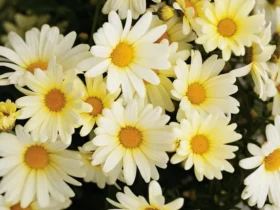Nestled within the woodlands and mountainous regions of eastern North America, a captivating and elegant shrub graces the landscape—the Kalmia latifolia, commonly known as the Mountain Laurel. With its exquisite clusters of delicate flowers and evergreen foliage, this native shrub stands as a symbol of natural beauty and resilience. From its historical significance to its ecological role, the Mountain Laurel holds a special place in the hearts of nature enthusiasts, gardeners, and admirers of native flora. In this article, we delve into the enchanting world of Kalmia latifolia, exploring its appearance, characteristics, cultural relevance, and its role in the ecosystem.

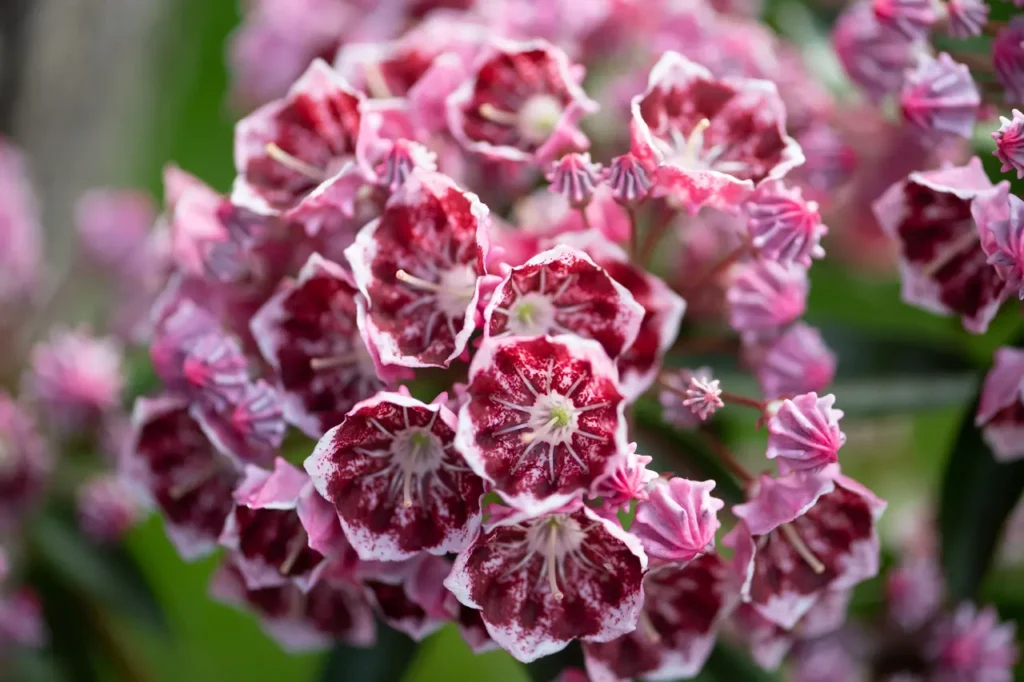
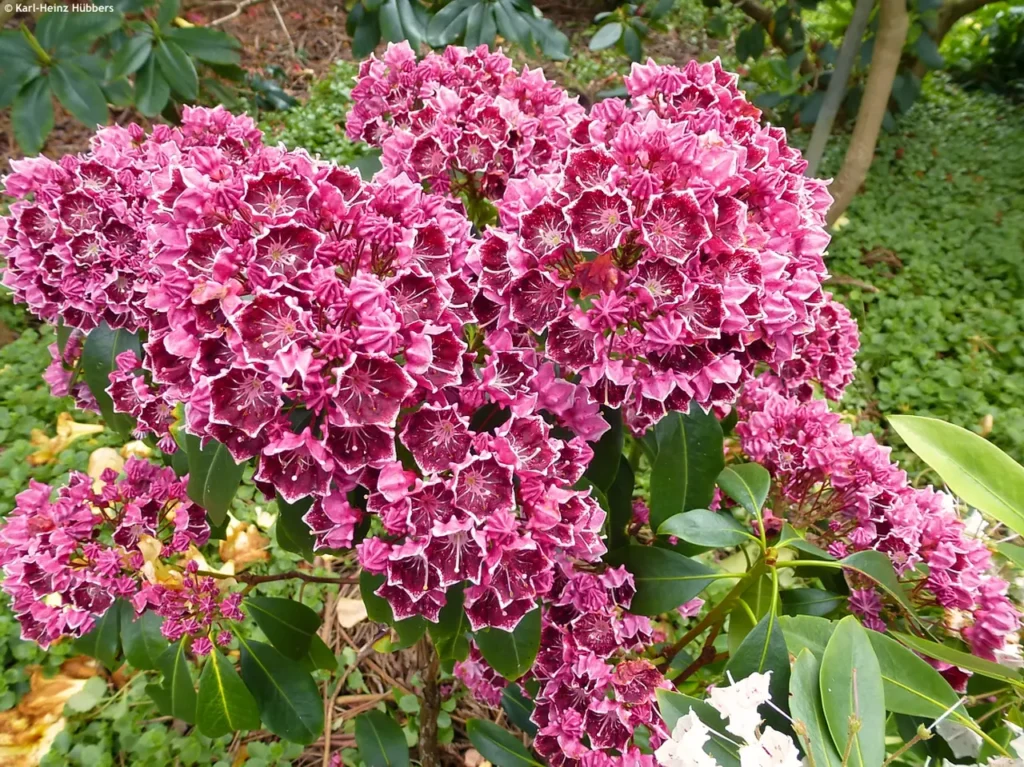
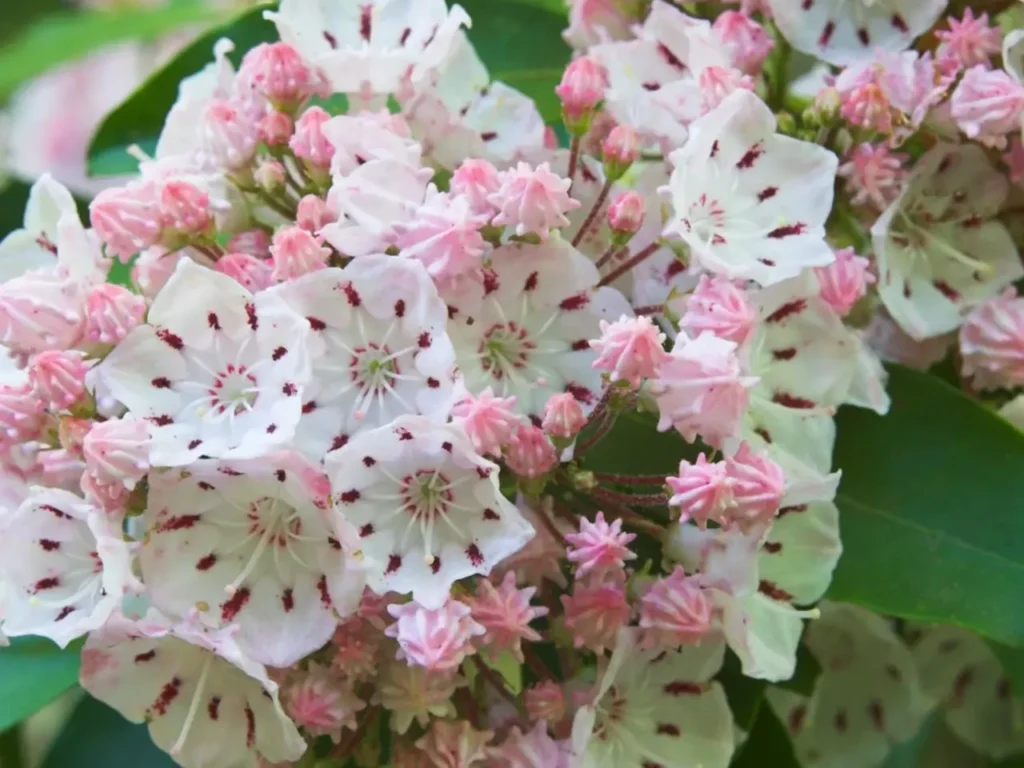
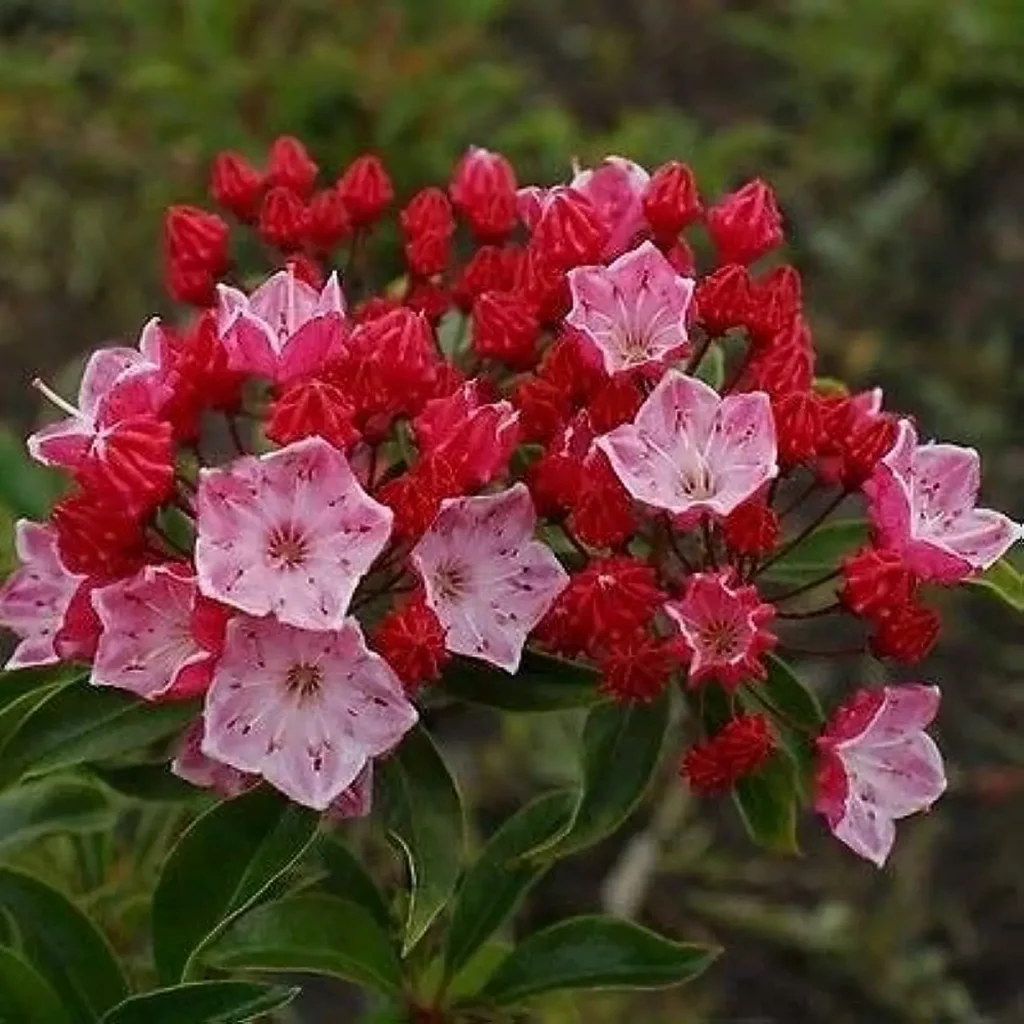
Appearance and Characteristics
The Mountain Laurel is a visually captivating evergreen shrub that boasts a combination of striking features. Its leathery leaves are deep green and shiny, providing year-round color and texture to the landscape. These leaves are arranged in an alternating fashion along the stems, creating a dense and bushy appearance.
The true showstopper of the Mountain Laurel is its intricate flowers. Clusters of bell-shaped blossoms emerge in late spring to early summer, forming delicate umbels at the ends of the branches. The flowers come in a range of shades, from white and pale pink to deeper shades of pink and even burgundy. The intricate pattern of the flower’s petals gives it a unique and eye-catching appearance, while its nectar-rich blooms attract a variety of pollinators, including bees and butterflies.
The color of the Kalmia latifolia
Kalmia latifolia, commonly known as Mountain Laurel, is an evergreen shrub native to the eastern United States. It is known for its beautiful clusters of flowers that bloom in late spring to early summer. The flowers of Kalmia latifolia come in a range of colors, including:
- Pink: The most common and iconic color of Mountain Laurel flowers is shades of pink. These can vary from light pink to deeper and richer pink tones.
- White: White-flowered varieties of Kalmia latifolia are also prevalent. These have a classic and clean appearance.
- Red: Some cultivars or variations of Mountain Laurel produce red flowers, adding a bold and vibrant touch to the landscape.
- Bi-colors: Some Mountain Laurel flowers display interesting bi-color patterns, where the petals might be white with pink or red markings or vice versa.
- Rare Variations: While less common, there are occasional variations in flower color, including shades of lavender or even light purple.
The exquisite flowers of Kalmia latifolia are held in rounded clusters and have a distinct and intricate structure. They attract pollinators like bees and butterflies and create a lovely display against the backdrop of the shrub’s glossy, dark green leaves. It’s important to note that while the flower colors mentioned above are common, variations can occur due to factors such as soil composition and sunlight exposure.
Cultural and Historical Significance
The Mountain Laurel holds a special place in American history and culture. In fact, it was designated as the official state flower of Connecticut and Pennsylvania due to its widespread presence and beauty. The plant’s name, “Kalmia,” pays homage to the Swedish botanist Pehr Kalm, who made significant contributions to the study of North American plants in the 18th century.
Native American tribes also recognized the value of the Mountain Laurel. Some tribes used the plant’s tough wood for crafting tools, while others appreciated its ornamental qualities and incorporated it into traditional ceremonies and rituals.
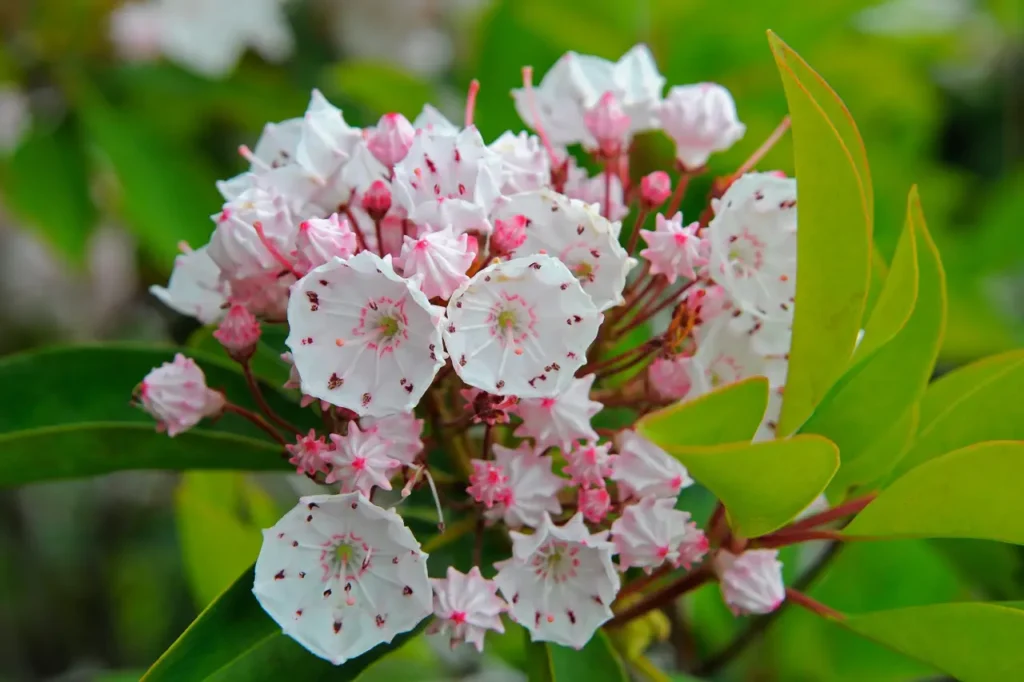
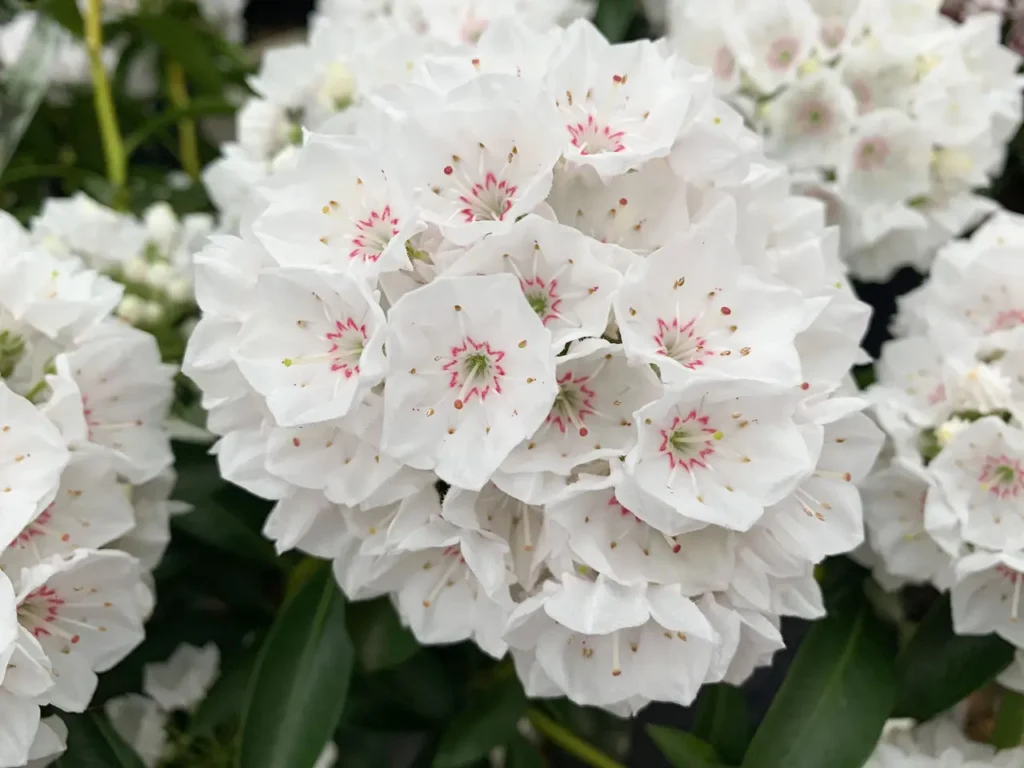

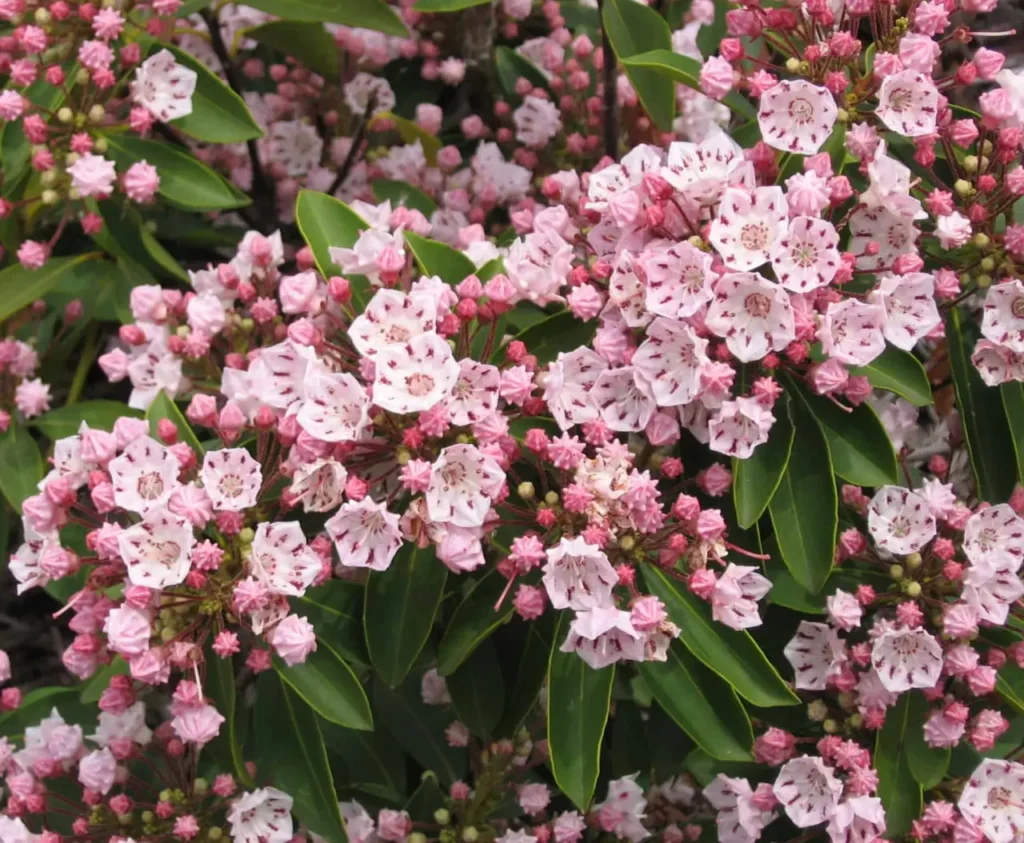
Ecosystem Role and Conservation
The Mountain Laurel plays a crucial role in its native ecosystem. Its nectar-rich flowers provide a valuable food source for pollinators, aiding in the reproduction of other plant species. Additionally, its dense foliage provides shelter and habitat for various wildlife, including birds and small mammals.
While the Mountain Laurel is not considered endangered, it faces threats from habitat loss due to urban development and invasive plant species. It’s important to protect and preserve natural areas where this native shrub thrives, ensuring its continued presence in the landscape and its contribution to local ecosystems.
Cultivation and Care
For those interested in incorporating the Mountain Laurel into their landscapes or gardens, consider the following tips for successful cultivation:
- Location: Plant Mountain Laurel in well-drained, acidic soil and choose a location with dappled sunlight or partial shade.
- Watering: While established plants are relatively drought-tolerant, regular watering is essential during the first few years of growth to help establish strong roots.
- Mulching: Apply a layer of mulch around the base of the plant to conserve moisture and suppress weed growth.
- Pruning: Minimal pruning is usually required, but you can remove dead or damaged branches in late winter to promote healthy growth.
- Pest and Disease Management: Mountain Laurel is generally resistant to pests and diseases. However, keep an eye out for issues such as leaf spot and aphids, and address them promptly if necessary.
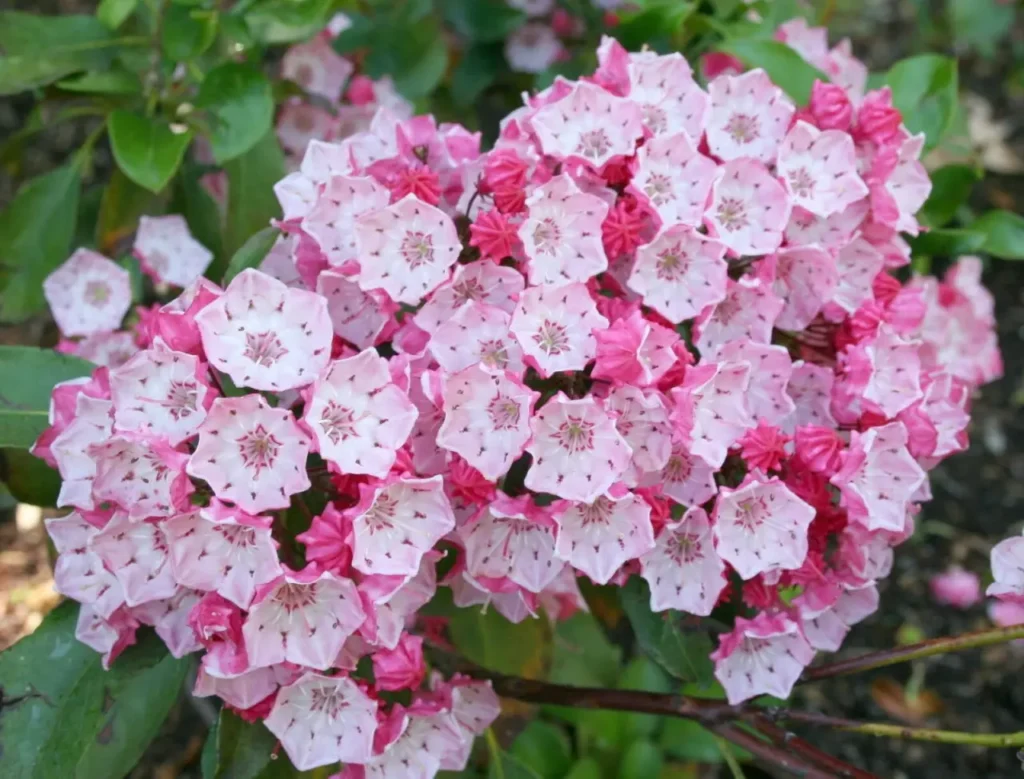
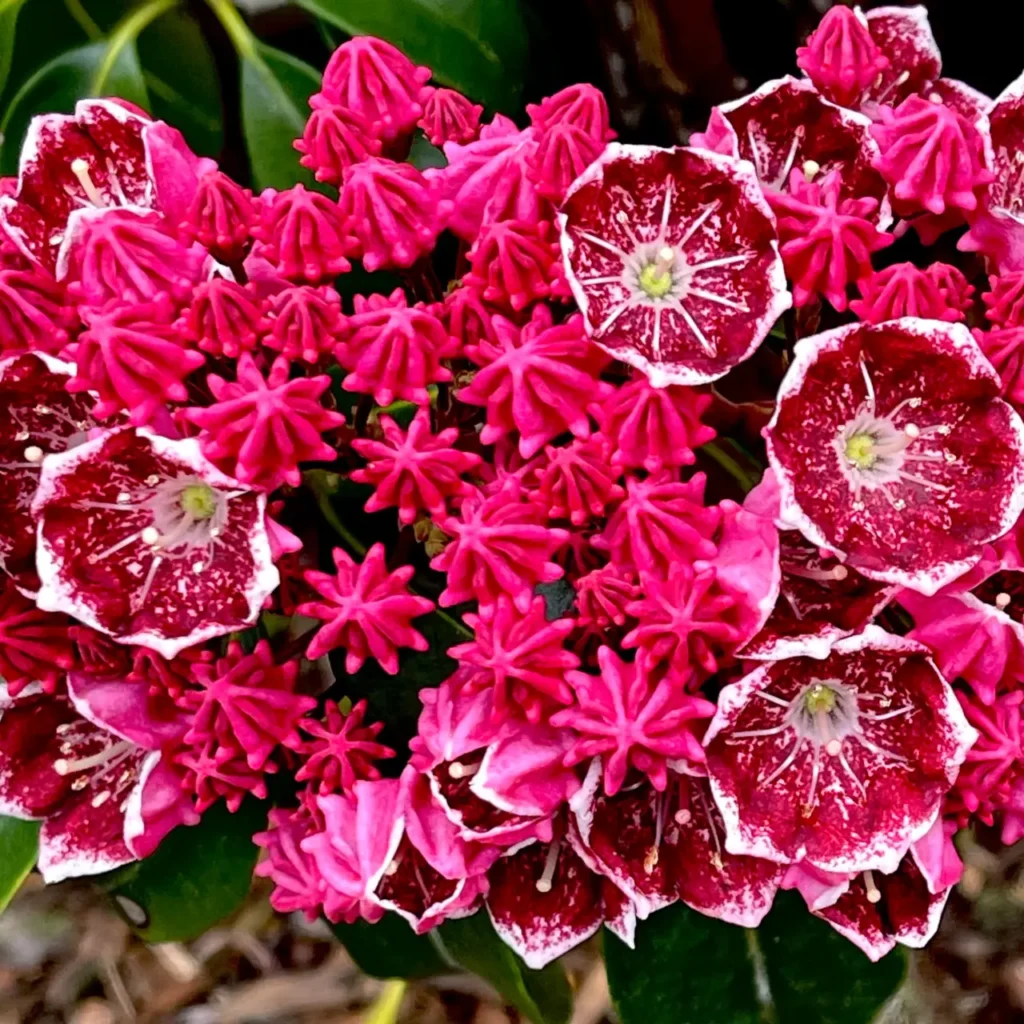

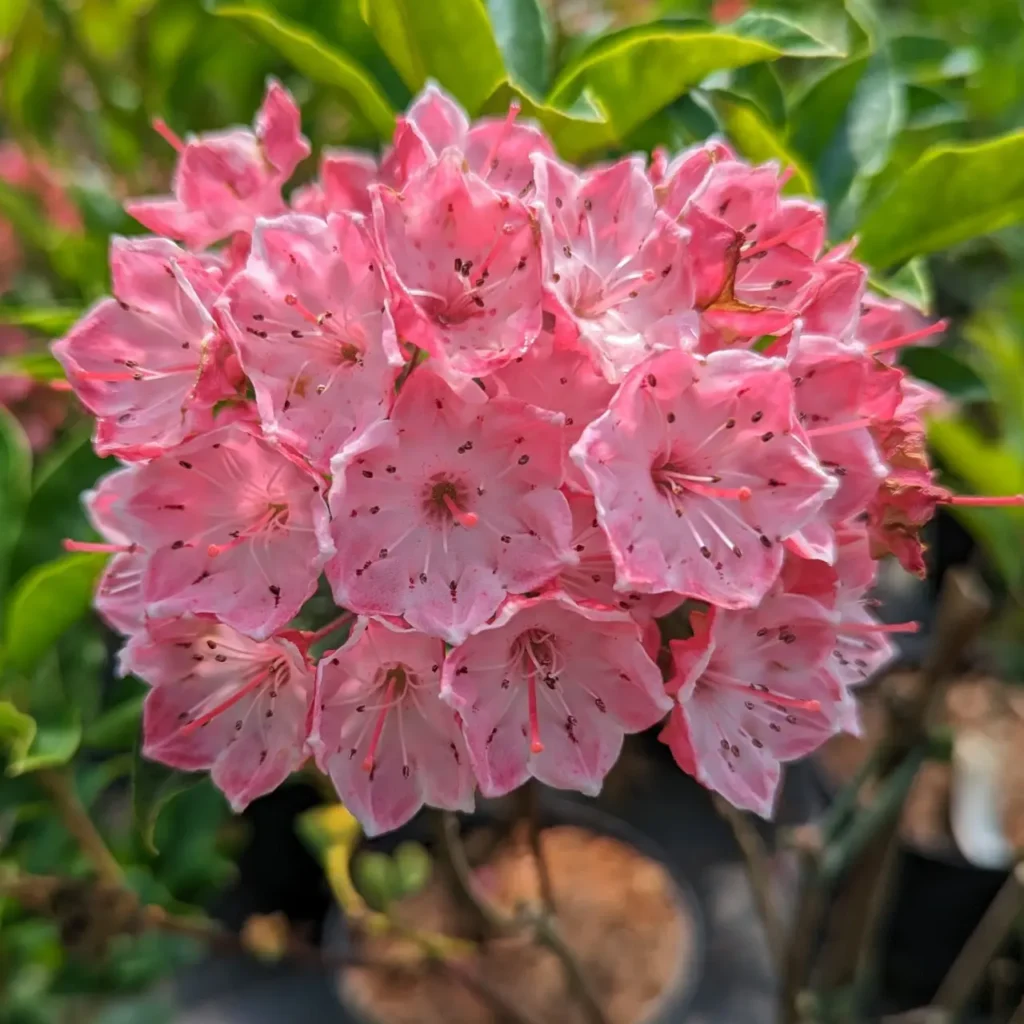
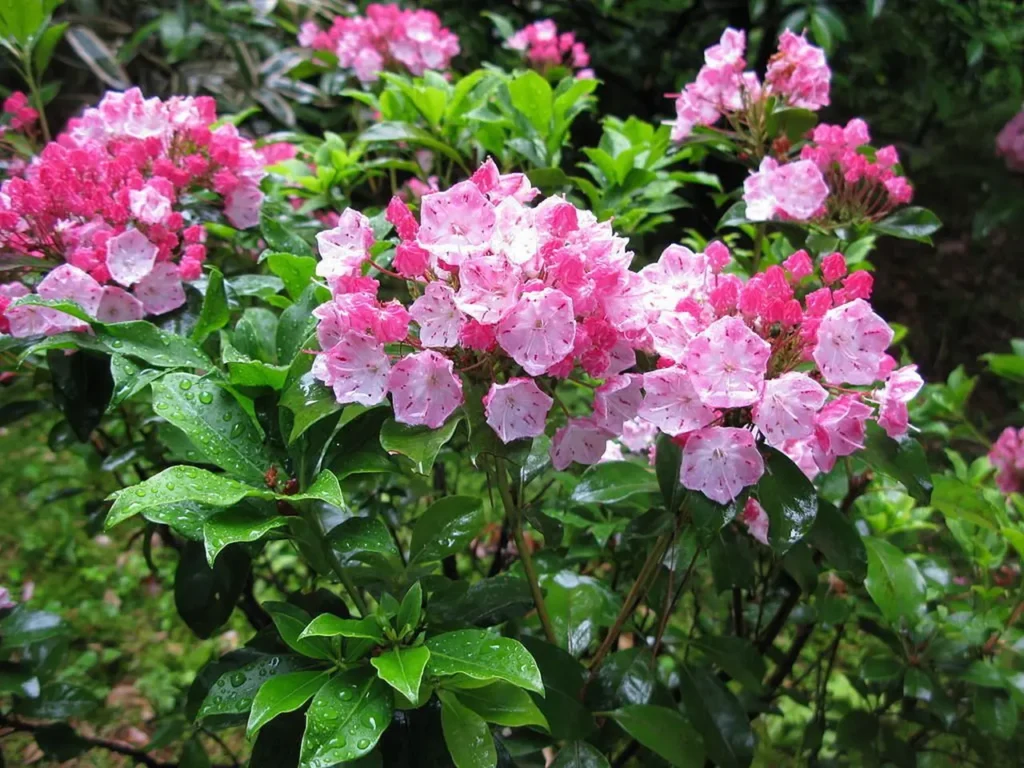
Kalmia latifolia, the Mountain Laurel, stands as a symbol of beauty, resilience, and cultural significance in the eastern woodlands of North America. From its exquisite flowers to its historical importance, this native shrub captures the essence of the natural world and its connections to human heritage. As we explore the captivating world of the Mountain Laurel, we gain a deeper appreciation for the role of native plants in ecosystems and their ability to enrich our lives through their beauty and ecological contributions.
